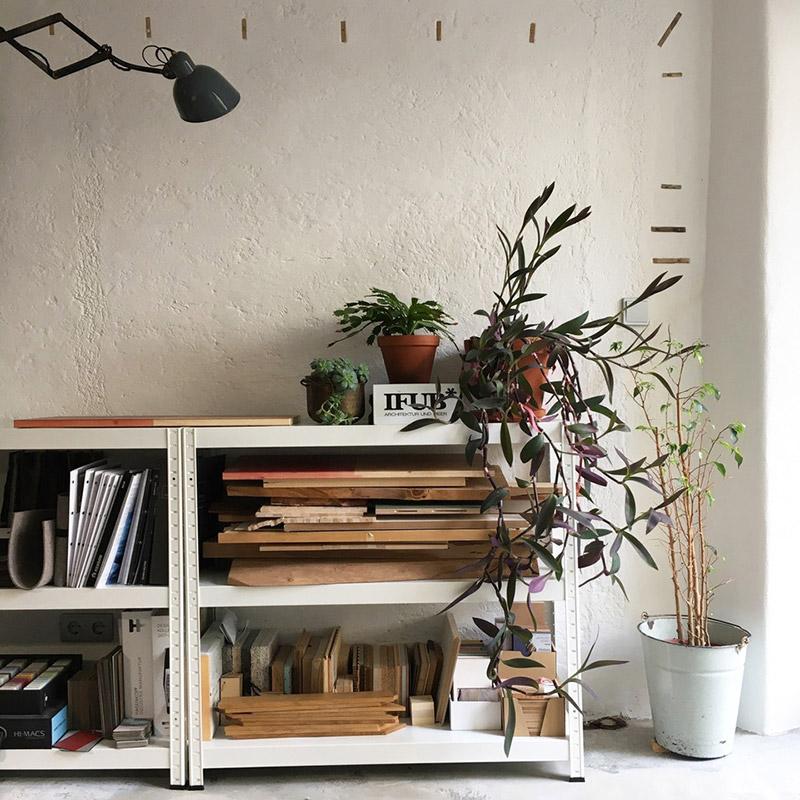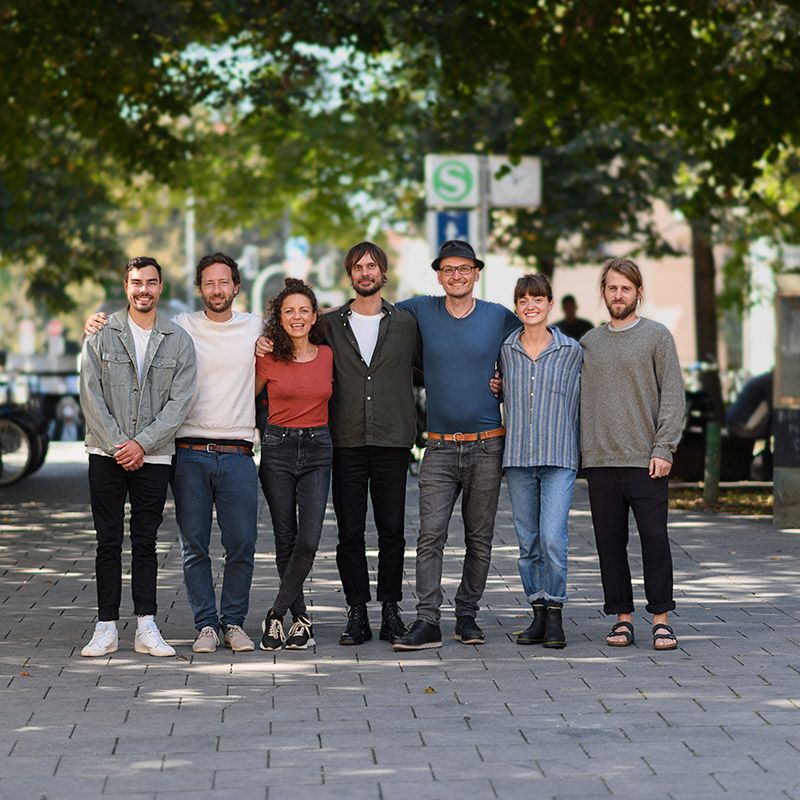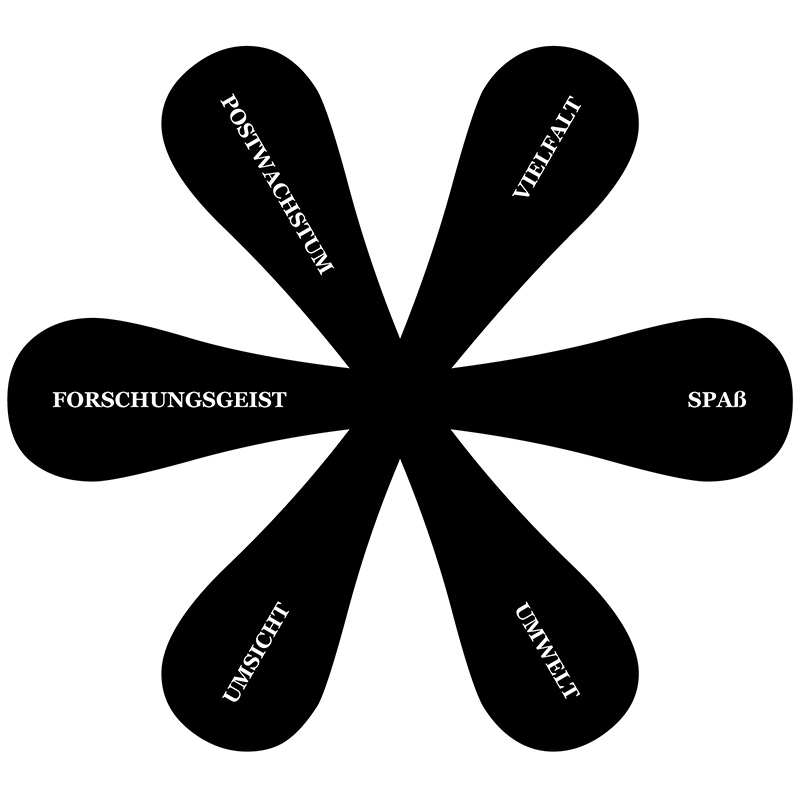Interview
Please, introduce yourself and your office…
The IFUB* – short for “Institut für u. Baukunst” was founded on the 1st of May 2012. We are an office of currently eight fantastic people with one office in Berlin, one in Munich and one recently added at Lake Constance. We mainly work on housing and office projects, but have also been working on public spaces like cafés. Recently we also got into kindergardens. We do not only do architecture but also interior architecture (we like the word more than interior design). We especially love doing refurbishment projects but we have also done new buildings. If we are asked what kind of architecture we do we usually say we do “architecture and interior architecture for the common good”. We’ve been talking about that on a recent interview here on kntxtr. We are also often asked about our name. We chose “institute” to emphasize our collaborative approach to projects, the “u.” can mean various things like unbelievable, unconventional, urban, etc. whereas “Baukunst” is just a nicer word for architecture.
How do you remember your time as an architectural employee/worker? What changed when you transitioned from employee to employer?
There were good and bad things among our first years as young professionals. We’d like to focus here on the learnings we took from those years:
- Don’t work too many hours. Whoever has been on the brink of a burn-out knows: Working too much wastes people, it blocks creativity and it produces unnecessary mistakes – which then produce more unnecessary work. Only if we have enough time to relax and do other things, we can do our job well.
- No unpaid work. We really hated unpaid extra hours. We never wanted to exploit ourselves and our employees – so since the foundation of our office we took care that every worked hour is a paid hour.
- Mentoring in the office. We truly believe in helping each other, teaching each other, not judging each other. If someone doesn’t know something, don’t let the person find out him*herself but support him*her. It might need more time in the beginning, but the long results mean less mistakes, better workflow, better understanding and by that more independent people.
- Structure is essential. A well structured work environment, with clear responsibilities, common working methods and organized processes makes working life easier.
- No. 1 and 2 are only possible if No. 3 and 4 are well implemented.
Please describe the working culture and working conditions in your office?
Right now we are eight people in the office. It’s difficult to describe our working culture in a few words. What we can say is that we are constantly improving our working conditions. Right now it looks like that:
- 32h week as full time for everybody
- Accurate, independent, centralized time recording of all team members and regular (approx. once per quarter) checks for overtime or undertime.
- Flexible, independent time management for everyone, without fixed guidelines from the management. Everyone has the opportunity to freely organize their working hours according to their own needs and project requirements. If this is not possible, an attempt is made to find a joint solution. In german the time management concept is called “Jahresarbeitszeitkonto” (annual working time account).
- Work may be done after 7 p.m. and on weekends and public holidays if desired, but that external communication should be excluded from this. Flexible time management should help to optimize the work-life-balance and not become a stress factor due to constant availability.
- Flat hierarchies in the project – with an attempt to anchor the managing directors not as project managers but as supporters in the process.
- Laptop for each person to make it easy to work from home, for example. Since 2022, in addition to laptops, dual-sim cell phones with business numbers to limit availability during non-working hours.
- Regular reviews to improve hardware, software and project structures as there is little more frustrating than pointlessly wasted working time.
- Bi-weekly online team meetings to inform everyone about upcoming projects/tasks but also to strengthen team ties, especially between the different offices.
- Regular coordination meetings to solve problems and scheduling difficulties quickly and flexibly.
- Solution-oriented error and problem management. Focus on the solution instead of the question of guilt and support in finding a solution. Worthy of special mention – lessons learned from mistakes are processed and material is made available to the entire office. Error management also includes the management taking a protective stance in front of employees if they are exposed to external attacks.
- Attempts at team building, including on the creative level, which is particularly “competitive” in our industry. It should not be important who had “the good idea”, the only important thing is that there is a good idea. After all, good ideas only come about through the exchange and sharing of ideas, and in the end, a good project always involves many clever minds.
- A strong focus on internal training and knowledge transfer in order to empower everyone to work independently in the first place and to avoid frustration caused by excessive demands and unnecessary hours. Good onboarding of new colleagues should also be mentioned here.
- Regularly encouraging everyone to take part in external training courses to increase our knowledge in the office and continuously improve.
- Annual individual employee appraisals to obtain overall feedback and identify development potential. The employee chooses the location or restaurant of their choice.
- Very important: 3–4 annual workshops with all team members to work on and decide on current topics, at least one of which is for reflection and joint discussion of cooperation and the development of opportunities for improvement.
- Annual four-day company excursion which is a mixture of further training (visiting architecture and interior design projects or trade fairs etc.), team building (eating, drinking and celebrating together) and workshop (current or specific topics).
- Full transparency in the office. All numbers are open to everybody. Not only evaluation of project fees and hourly wages but also salaries or gainings of the company.
- Joint decision of all employees what to do with the profits of the company. No separate payments outside the regular salary (not even for the owners/managers.)
- Joint development of our common values – the base of us working together. They are now written down and printed on a poster in our office. (see above – the IFUB* value star)
- Joint development of how we want to do architecture. This is our so called “Manual for building for the common good”
- There is much more… We have e.g. a concept for mobility (free BahnCard 50, free Deutschland-ticket or jobbike, 5 days extra holidays for a year not flying), a concept for shopping (do we really need it? can we buy it second hand? let’s buy quality!) or a dedication to external activities. For a full insight: Please read our “Common good balance!” You can find it on our website for download (only in german – sorry!)
Salaries – According to you what are fair salaries?
First of all – full transparency. Transparent salaries for owners, managers and employees alike. This ensures a certain amount of fairness. Second – a joint decision who to pay what. In our office so far we have a transparent system based on yearly raises. It includes adjustments for cities (Munich more expensive than Berlin) and for jobs (managers get a bit more for liability risks). Right now we are working on a new system – please ask us again next year!
What needs to change in order for the architecture field to have better working conditions/salaries?
There are two sides to the necessary change: On the one hand, change can be initiated by the employees – forcing the whole industry to follow. Transparency would help a lot here. Fixed rates are a good idea – it would set a certain standard everybody would have to follow. We would not mind at all! On the other hand we have to increase the earnings of the offices so better salaries can be paid. A big point is how we architects work. First – better structured offices. The better the structures, the higher the efficiency, the more people can get paid. Second – no more unpaid competitions. Competitions are a waste of time and creativity (especially when there are no limits to the number of participants). How much good could be done with all those needless hours that go into unpaid competitions?
Should Salaries be part of the job description?
So far we have not put up the salaries in the job description, mostly because they are not so easy to tell exactly. In our system so far we have changes every year so a person with 5 years of experience earns more than one with 4 years. We also think salaries are a bit difficult to compare. E.g. – we have a 32h week. We pay every extra hour, we also pay a lot of extras (see above). For salaries to be part of the job description there would have to be a certain standard to make them comparable.
Also – for us money is not the main reason we work. Our salaries have to be fair for sure which we ensure with 100% transparency. We all know we pay as much as we can and as much as we decided together to pay each other. But there is another aspect to it. People do not primarily work with us for the money. They come for who we are and what we stand for. They come for the purpose and the common goals we have. So maybe the purpose or vision of a company would be more important in a job description?
What are your thoughts on UNIONIZING? Do we need an Architekt*innengewerkschaft in Germany?
We support the idea. As architects we work too much against each other instead of joining forces. How crazy would it be, if all architects went on strike?
Quick Questions – What is your take on:
Gen-Z-Working-Mentality: Great! We need to question the way work ethics are now!
4-Day Workweek: 32h is better than 4-days – with the flexibility to adjust weekdays to your needs. But int the office we all agree – never 40h again!
Fachkräftemangel (lack of skilled workers): A problem in the construction industry. I don’t see it much in the architectural community. In general we have to many unnecessary bullshit-jobs. We recommend to read the book “Bullshitjobs” by David Graeber on that topic. It points out how many jobs do exist that nobody needs. If we could only get rid of these!
AI: Scary stuff. It will be interesting to see how it changes our society.
Holacracy: We thought about implementing it (we love the concept) but it seems we are to small an office for that. It works better in bigger organisations. If we ever grow bigger we will have another take on it.
New Work: What Frithjof Bergmann wanted to say originally – hell yeah! – What office developers made from it – god no!
Image Credits: © IFUB / Publication Date: 01/2024


